Why lookee here: Lisa Broccoli of Swiss Paleo is back with another guest post from the Swiss Alps!

Last time Lisa paid a visit to my blog, she taught us how to make fresh Italian & chorizo sausage links. In today’s post, she gives us step-by-step instructions for a traditional German rabbit stew. (For those of you unable or unwilling to find rabbit legs, chicken legs are a good substitute.) Bonus: The recipe has metric units for my international readers. Yes!
You must check out Lisa’s awesome blog, Swiss Paleo, which features tantalizing Paleo recipes, lifestyle/fitness articles and write-ups of her travels (and, of course, what she ate when she got there). Follow her on Facebook, Pinterest, and Twitter!
Take it away, Lisa!
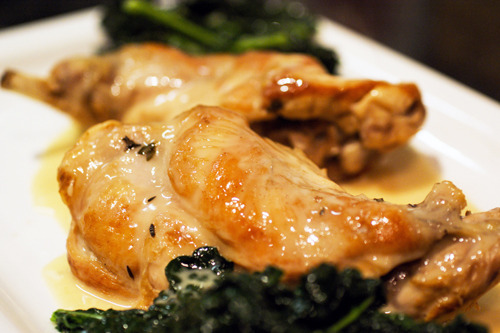
I bought some wild rabbit legs the other day when I went to the farmer’s market. I have never actually eaten or cooked a rabbit before, but I was eager to try out something different. Besides, I was going to have to come up with something for this guest post that Michelle hasn’t already made. Do you know how hard that is? She has a recipe for just about everything! I had seen a recipe for rabbit stew on a BBC cooking channel and decided that I would try to make something like that. Or maybe what I would end up with would be more like Yosemite Sam’s attempt at Hasenpfeffer Stew (which is actually something that you’ll find on the menu here in Switzerland).
Here you go…a recipe and a cartoon!
Ingredients (serves 2):
- 150 grams (5 oz) cured pork belly, diced
- 2 rabbit legs (bone-in), each weighing 250 grams (half a pound)
- Kosher salt
- Freshly ground black pepper
- 1 onion, chopped into chunks
- 2 stalks of celery, roughly chopped
- 2 carrots, cut into 2-inch pieces
- 1 bay leaf
- 1 sprig of fresh thyme
- 500 ml (2 cups) dry cider (see below for info)
- 2 teaspoons of arrowroot flour (optional)
- ½ cup (100 ml) of whole fat cream (optional)
Instructions:
Brown your diced pork belly in a frying pan over medium high heat until it starts to get crispy.


Remove with a slotted spoon and put it into an oven-proof casserole dish.
Now season the rabbit legs with salt and pepper and brown them in the same pan with the pork belly fat drippings.

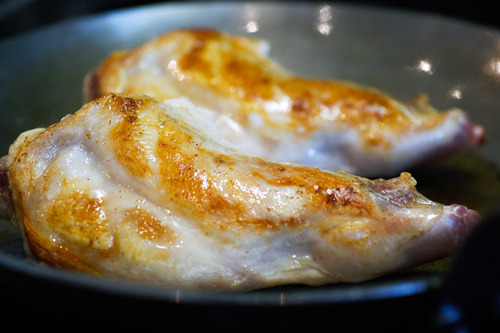
Place the browned rabbit legs on top of the crispy pork belly in your casserole dish.
Add the chopped onion and celery to the pan with the drippings and cook over medium heat until the onion starts to caramelize.
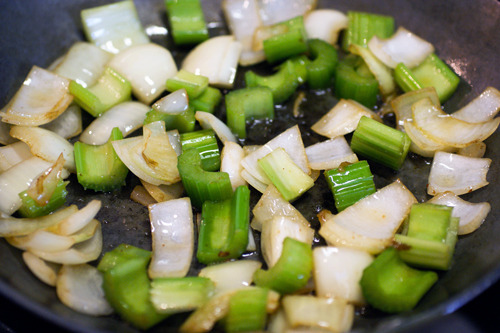
Spoon the cooked onions and celery on top of the rabbit legs.
Toss in the carrots, bay leaf and the sprig of fresh thyme.
Pour the cider over the top of everything. Your meat should be covered.
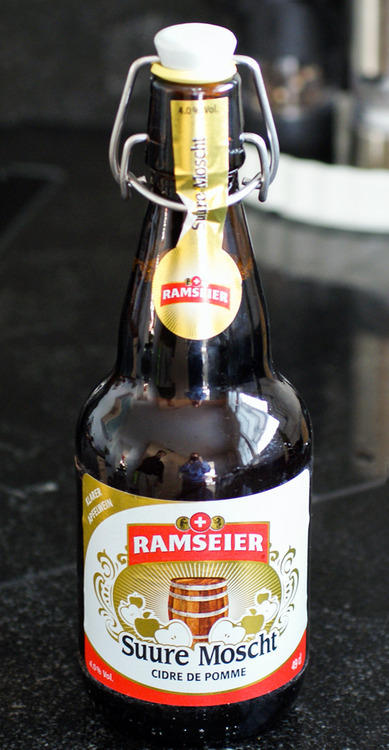
(You can read all about dry cider – sometimes called hard cider – here. Look for it where you buy specialty beers. The link gives suggestions for where you might find it and what you could use as an alternative if you can’t find it. I think it tastes like carbonated apple juice with a kick. It also tastes a lot like my home brewed kombucha. Maybe kombucha would work in place of the cider. Kombucha is pretty magical.)
Put a lid on your casserole and place it in a preheated 400°F (200°C) oven.

After 15 minutes, turn the heat down to 120°C (250°F) and cook for an additional hour and 15 minutes.

Now you have a choice to make…
You can:
- Plate your rabbit legs with a few of the carrots, onions and pieces of pork belly and spoon the sauce from the casserole over it.
OR
- Do the following: Plate your rabbit legs. Pour the sauce and vegetables through a strainer and discard the vegetables and pork belly (or save them for something else).
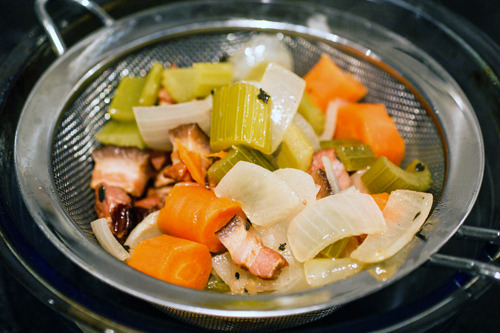
Return the strained sauce to a sauce pan and bring to a boil over high heat.
Boil for 10 minutes to reduce.
Remove about ¼ cup sauce and mix it in a small cup with 2 teaspoons of arrowroot flour (skip this part if you don’t want a thicker sauce). Pour the sauce/arrowroot mixture back into the pot with the rest of the reduced sauce and stir well as it begins to thicken over medium heat.
Remove from heat and stir in ½ cup (100 ml) of whole fat cream to make a sauce for the rabbit legs.

The Verdict:
I know why the king wanted Hasenpfeffer stew…it’s pretty darn tasty! The sauce was rich and flavorful (we added cream) and the meat was tender and moist. And just what does rabbit taste like? Well, just like so many other things, it tastes a lot like chicken 🙂
En Guete! (Swiss German for “Have a nice meal!”)



